#Lower saxony history
Text
The seven sisters

Warning : mature, chauki mythology, historically not fully correct, lower saxony history, human sacrifice, mention of cannibalism
1. The full moon with the seven sisters
The seven sisters sat in the sky the night Wolfmar's sister was born. A full moon accompanied them to illuminate the whole village beneath them.
His muda's screams wailed through the shadows, and no prayers and no magi could help her.
The men sat at the bonfire in front of the longhouse, staring into the flames and ignoring the screams.
If the magi couldn't help, no one could.
Wolfmar's fadder, the gray bearded high-man of the tribe, carved with jittery gesture on the piece of wood in his hand. Wodans rune and numbers - and Wolfmar wonders for a moment, why his father chose this sign. He would had tried to call to Fraia. He wasn't his fadder, though, but a boy of 12 winters, not yet allowed to hunt. So he was nothing.
The screams from the magi house stopped so abruptly, that the echo rung in their ears for some moment, until Wolfmar's father eventually gathered, that his woman had yielded.
The men around the fire threw nervously glances at each other. Silence was a bad sign. Always.
Wolfmar watched his fadder's hands cramping around the piece of wood. He let it fallen abruptly as he jumped up. Wolfmar followed his example, facing his fadder.
Not meeting his eyes, the high-man gestured into the shadows.
“Go to her. Look, what the magi has for us. Report.”
“Yes, tain.”
Wolfmar took a branch out of the fire to walk into the darkness to the maggis house. The stillness - the absolute stillness pressed on his ears like a cloth.
He didn't want to see, nor to hear what the magi has to say. His muda's screams have told him the worst already.
He was relieved as he was greeted by the magi at the door steps. She held a bundle of wool in her left arm, what moved solemnly. Wolfmar could hear some unfamiliar but curious noises. Good noises. He inhaled calm out and looked questioning. He dared not to ask. It was never good to question a magi or a seeing kind. It was sometimes the worst to know too much.
The magi placed the bundle into Wolfmar's arms.
“Careful, boy. She's alive. Tell the tain to take Silda as a milk woman.”
What made sense. Frowe Silda had just lost her little one, she must have still milk.
“I send someone to dig.”, Wolfmar heard his own voice, dull and emotionless. “The ground his hard.”
He turned back into the night, wandered back to the bonfire. His fadder knew by the look of his face.
They needed three men to dig a grave for his muda. Morning Clouds hid the sisters, as they were finished.
The next day the grave was snow covered.
2. The one sister
Aldaga was a sunshine.
Her whole, round face was beaming in joy, no matter the situation. Her eyes funnily narrowed, as if she had to focus so very hard to see, her giggle loud and silly, she was able to soften the hearts of every member of the tribe.
His fadder was thrilled to find out that she was blessed by fraia, she was the everyday joy and warmth, and oh! She was clever on her own terms.
Yes, Aldaga was in some tasks slow and dimwitted. The magi told him early one Aldaga was no frowe to hand for a man, nor to be with child herself. She was for the gods. So she became their tribe deity.
She was the one who got dressed in the fine's wool pieces, she was to wear shoes, filled with down feathers. Her shoulders were decked with fur, and her light hair every week fresh braided and salved.
Every time Wolfmar's eyes felt on his sister, his stomach tickled. He knew his duty. The first time he was allowed to hunt, he killed a deer, so young and still full of muda milk. The sweet flesh was Aldaga's treat. Aldaga in her special wisdom shared with the magi, and the magi shared with the tribe.
The frowen of the tribe cut and boiled, salted it in stribes and let it dry for the winter.
Together with the daily cereal oatmeal, mixed with mushrooms and herbs, it warmed the whole village for the winter.
Sometimes Aldaga staid with the magi for some days, hiding in the house. Singing and drinking magi's frowe tea. Sometimes they wandered in the forest, eating rare mushrooms and collect healing roots.
“We spoke to the Reineke, Wolfmar.”, Aldaga told him after such times. “Can you guess what he told me!?”
He never guessed right. Aldaga never told. Sometimes she whispered nonsense in his ear, silly sing sang of laughing trees and singing flowers. No member of the tribe would spoil their time with such nonsense, but when Aldaga told them, they listened. Especially when it was a cold winter night, with howling wind and frozen roofs.
The winter were the hardest. The older Wolfmar became, the longer staid the cold. So it felt, at least for Wolfmar. Sometimes, when the Blizzard catched the longhouses, the frost crashed a roof, and the ice-cold wind blew out the fire places inside the houses, Wolfmar wished the time was close. Nevertheless, it wasn't his call. The tain and the magi will know.
3. The seven sisters in half moon
The magi called for him a night before the longest one.
One night. Only one night to understand it was the last.
"Aldaga is in her age, too soon she will get visited by the moon. She had to leave before that.”, the magi explained to him. He didn't understand.
She sat him down, giving him the instruction for the ceremony he had to master.
He wasn't asked to do so. He was ordered.
Like his fadder, the tain, had ordered him to the magi at Aldaga birth night.
“You brought her out of the night into the tribe. You will bring her back where she belongs.”
He had to do as the tain tell him.
The magi was kind, holding his hands and caressing along his palm, as she explained to him what to do.
She hugged him afterwards, handed him the knife and told him to send Aldaga to her tomorrow.
To Wolfmar's surprise, he was allowed to stay and to watch the cleansing.
He didn't know what to do with his eyes, while Aldaga slipped out of her clothes.
Her plump body, well-fed and sunny, got a rub with fresh snow and warmed up salve, before the magi dressed her up in a new gown. It was too light for the last winter days, fine sheep wool and goatskin. The trim of her neckline was embroided, reminding Wolfmar of a hand-fast gown.
He watched fascinated the flying fingers of the magi, combing Aldagas hair until it shined like copper. He could not gather how fast the magi braided the now shining hair in small, evenly braids, who got creamed with a sweetly smelling salve. At last, the magi decorated Aldagas thick fingers with bronze rings.
The result was breathtaking.
Aldaga twirled in the shine of the fire, laughing excites.
“Am I fair, Wolfmar? Am I a bride?”, she laughed excited and danced silly.
And she was.
Her light hair braided and knotted into a crown, the dress of a tribe princess, she was ready to hand fast with the gods.
“Fraia will welcome her sister.”, the magi hummed. Wolfmar agreed with a full, but heavy heart.
“Don't wait too long.”, she spoke firmer and gave Wolfmar a knowing glance.
Wolfmar's throat was tight, so he just nodded and rose.
Holding a hand up, he waited, until Aldaga took it of her own.
It was important that she came willingly.
Aldaga, excited and smiling - beamingly smiling, always smiling - followed keen.
The cave wasn't this far. Half an hour through the night.
However, the entrance was small by purpose.
One has to get on his knees to enter the holly. Knowing, that this place was the front hall to the gods, Aldaga and Wolfmar crawled solemn inside.
He heard his sister chuckle.
“Look! More light!”
She was right. A light hole, far up in the ceiling, send the milken light of the half moon on the way. It illuminated the small and narrow way to the well, what were their destination.
Wolfmar found himself shivering, even that the surrounding walls were embracing him kindly. He could feel the handle of the knife pocking in his side.
Aldaga stopped in front of him so abruptly, he nearly pushed her forward. They had arrived the well.
He was grateful not to see her face now, while Aldaga sat laborious up, her legs hanging over the rim of the well.
“What is down there?”, she asked so innocently, Wolfmar thought a moment to run.
With her, to the next post. There was one, half a day, filled with strangers in shiny metal and rasp voices.
A second later, he dismissed his idea. That was a stupid thought! Was living under the Stranger as slaves better than to live under the will of the gods? How silly!
He crawled closer, resting his chin on his sister's shoulder.
“This is the way home.”, he whispered. The strong scent of the hair salve bite in his nose.
“Your real home.”
“Is muda there?”, Aldaga whispered, her voice suddenly small.
Wolfmar was able to see half her face, wide eyes and unsureness in her expression.
“Yes. You go and walk with her and fraia. And next spring, you come back. Promise?”
Aldaga laughed out. Her face a sunny beam again.
“Of course, Wolfmar!”
This was the moment he used the knife.
He was quick like a hunter, ending his prey. The blade smoothed clean and deep. A swall of blood, like a water cascade, floated out of Aldaga's throat.
Her eyes became empty, and silently she toppled over the rim of the well.
It was low enough to hear the impact.
He didn't know how he got out of the cave. He found himself out of it, sitting beside his steaming puke.
Deeply inhaling, he looked up to the sisters. His teary eyes tricked him for a second and the seven sisters had become eight. And maybe that was not an illusion at all.
Eventually he made his way back to the village, crying alone in the dark, because he was not allowed to cry in front of the tribe.
Next year, they will come back, everybody, to visit Aldaga.
They will use the magi's path and break the bones and eat together.
Next year, they will share and be close to the gods, thanking them for the warmth.
This was his only solace.
#Winter solstice writing event#Longest night stories#By crewman penelope#winter solstice#Lower saxony history#Chauki mythology#Tw: human sacrifice#Tw: mention of cannibalism#The seven sisters#Plejaden#The longest night#Spring is coming#Thank you cuckoo on a string
18 notes
·
View notes
Text

Schloss Marienburg, Pattensen, Lower Saxony, Germany
#art#design#architecture#history#luxury lifestyle#style#luxury house#castle#luxury home#schloss#schloss marienburg#neoclassical#germany#pattensen#lower saxony#old castle#marienberg
473 notes
·
View notes
Text










A Winter Fairytale ❄️🎄🕯❄️ Marienburg castle - December 2022
#marienburg castle#marienburg#germany#lower saxony#castle#christmas#x-mas#winter#medieval#history#building#architecture#nature#landscape#my edit#my photos#mine#picspam#aesthetics#castles#photos#photoset#details#scenery
16 notes
·
View notes
Text
Interwoven Traces of Time: A Day in Benstrup and the Vibrant Soul of a Village
Interwoven Traces of Time: A Day in Benstrup and the Vibrant Soul of a Village
On a sunny morning, Marcus decided to take a trip to the charming village of Benstrup near Steinrieden and Madlage in Lower Saxony. A place of historical significance and a strong community, as he would soon discover.
Benstrup, Steinrieden, and Madlage were once independent hamlets that now form a close-knit parish and village community. They are part of the picturesque town of Löningen in the district of Cloppenburg in the Oldenburger Münsterland region. The history of Benstrup stretched far back, all the way to 1258, when it was first documented as "Bedenstorpe". Yet, its origins reached even further into the past, back to the Old Saxon colonization of the 5th/6th century AD. The establishment of Benstrup was strategically positioned along the "Flemish Army and Trade Road", indicating a deliberate settlement policy.
As Marcus wandered through history, he admired the protected St. Bonifatius Church. An architectural gem, built between 1921 and 1923 in the Neo-Baroque style with elements of Art Nouveau. The interior decoration, crafted in the Nazarene style, was breathtaking, lending the church a unique atmosphere. Here, he encountered the volunteer children's choir conductor and was enchanted by the music.
The encounters continued as Marcus arrived at Mani's Hof, pulled by a traditional horse-drawn carriage. He met Mani, the knowledgeable agricultural machinery mechanic, who proudly showed him his carriages and the horse stable. As a surprise, the music association turned the corner and played delightful melodies with 60 musicians. Marcus felt the joy and enthusiasm of the community.
In the local inn, the heart of the village, Marcus learned about the extraordinary idea of the community purchasing and renovating it. Here, he met Lüdger, the passionate Shooting King, who not only supervised the inn's construction site but was also active in the Shooting Club. The community in Benstrup was robust, with everyone helping each other.
The next stop was the Tractor Club, which participated in global championships with its impressive "monster tractors". Despite their immense horsepower, these machines were sustainable, running on CO2-neutral vegetable oil. The German championships were their goal.
In the Benstrup pottery studio, Marcus encountered creative minds crafting and selling beautiful figurines and jewelry. He sensed the love for craftsmanship and the creativity of the villagers.
As the day drew to a close, Marcus met Gerd, the Deputy Chairman of the Village Association, who was busy cooking. Gerd, an active community member for over 10 years, proudly shared stories of the warmth and openness of the Benstrup residents.
With a warmer heart and a fulfilled spirit, Marcus bid farewell to Benstrup. A place rich not only in history and tradition but also shaped by a lively and supportive community. It was a journey Marcus wouldn't soon forget, and he knew he would always feel welcome upon his return.
#Interwoven#Traces of Time#Day#Benstrup#Vibrant#Soul#Village#Sunny morning#Charming#Historical significance#Strong community#Hamlets#Parish#Lower Saxony#Löningen#Cloppenburg district#Oldenburger Münsterland#History#Origins#Old Saxon#colonization#Settlement policy#St. Bonifatius Church#Neo-Baroque#Art Nouveau#Nazarene style#Volunteer children's choir conductor#Music#Mani's Hof#Horse-drawn carriage
0 notes
Text
A 22 year old woman who was about to graduate with a degree in engineering is now dead because her ex couldn't accept that the relationship was over.

Gino Cecchettin, hugging his daughter Elena, attends a torchlit procession in Vigonovo, near Venice, northern Italy, Sunday, Nov. 19, 2023, after the police found the body of his other daughter Giulia, reportedly with multiple stab wounds and wrapped in plastic on Saturday in a ditch near Venice. Police in Germany over the weekend arrested Filippo Turetta, 21, who had been on the run since Nov. 11, when he was last seen arguing with Giulia Cecchettin. (Lucrezia Granzetti/LaPresse via AP)
The Associated Press
ROME -- Italy has erupted in outrage over the death of a young woman, allegedly at the hands of her possessive ex-boyfriend, with the Italian premier vowing to crack down further on gender-based violence that has claimed the lives of more than 50 women so far this year.
Police in Germany over the weekend arrested Filippo Turetta, who had been on the run since Nov. 11, when he was last seen fighting with 22-year-old Giulia Cecchettin, hitting her in a physical attack that was captured by roadside video cameras.
Cecchettin's body, reportedly with multiple stab wounds, was found wrapped in plastic on Saturday in a ditch near Lake Barcis, in the province of Pordenone north of Venice.
Italian newspapers had been consumed with the search for them both, given multiple reports from friends and family that Turetta had refused to accept Cecchettin's decision to end the relationship. Cecchettin’s sister, Elena, said she had been concerned about Turetta’s possessiveness of her sister but never imagined he could hurt her.
Police in the eastern German city of Halle said Sunday that they had detained a 21-year-old Italian man who was wanted by police in Italy after his car broke down on the A9 highway in the south of the eastern state of Saxony-Anhalt.
Italian news reports said police road cameras had traced Turetta’s black Fiat Punto as he drove on mountain roads through northern Italy, into Austria and then Germany.
Italian state-run radio network RAI said Turetta had agreed to be extradited, and Italian Foreign Minister Antonio Tajani said he was expected back in Italy within days. Venice's chief prosecutor, Bruno Cherchi, suggested Monday it might take longer and urged patience so the investigation can complete its course without external pressure.
The fate of Cecchettin, who had been due to graduate university Thursday with a degree in engineering, had dominated news reports for a week and led to an outpouring of anger when her body was finally found. Even Turetta's parents attended a candlelit vigil for her, and RAI led its main evening news program Sunday with a backdrop made up of portraits of all the women killed in Italy this year.
Premier Giorgia Melon i expressed outrage at Italy’s long history of violence against women by their partners or ex-partners, saying it has appeared to be getting worse recently. She cited data from the Interior Ministry saying of the 102 women killed in Italy this year up to Nov. 12, 53 died at the hands of their partners or former partners.
“Every single woman killed because she is ‘guilty’ of being free is an aberration that cannot be tolerated and that drives me to continue on the path taken to stop this barbarity,” she said in a statement on social media.
A government-backed bill that has already passed the lower Chamber of Deputies and is coming to the Senate later this month would boost preventative measures to protect victims of gender-based violence.
In addition, the Interior Ministry urged all schools to hold a minute of silence on Tuesday in honor of Cecchettin “and all abused women and victims of violence.” An organization of Italian university rectors, meanwhile, vowed to launch initiatives to make students more aware of gender-based violence.
The aim, the group said, was to “promote respect of the person and halt violence against women” through education that fosters a culture of respect and responsibility.
#italy#Femicide#A woman is most in danger after leaving a bad relationship#102 women in Italy were killed in 2023 so far#Rest In Peace Giulia Cecchettin#Men can't accept when relationships are over but women are the emotional ones
210 notes
·
View notes
Text

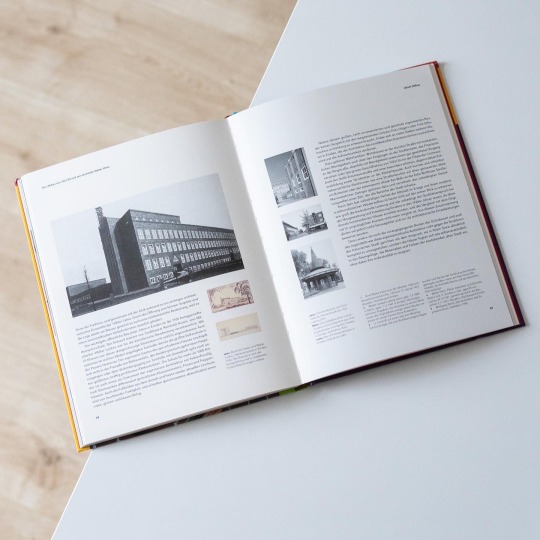
The four decades between the 1880s and the start of World War I brought about significant change for the German town of Emden in Lower Saxony: a canal connection to the Ruhr area led to a significant increase of traffic and goods turnover as Emden at the same time served as a hub for the sea transport of goods coming from the Ruhr area. This boom required a comprehensive extension of the port area and consecutively new dwellings and infrastructure.
This trend continued after the end of the First World War in 1918 and architecture-wise peaked under the aegis of the head of the municipal planning and building office Reinhold Haasis’: he served from 1925 to 1933 when he was removed by the National Socialist. During his tenure the city of Emden, which had more than doubled its population between 1885 and 1933, saw the construction of a number of remarkable buildings characterized by an amalgam of local brick architecture and Expressionism.
One of the buildings conceived during this period was the former agricultural school/savings bank, a design by Walter Heim that was built in 1927/28. It is a striking example of the local expressionist idiom, significantly more restrained than those in Hamburg or Hannover, that especially on the inside surprises with expressive details and an unusually bold color scheme. This color scheme was restored during the buildings’ renovation and extension carried out by Helmut Riemann in 1999, a revitalization that was followed up by the present book: „Expressionistische Architektur in Emden - Ein Haus von 1928 und seine Neugestaltung“, edited by Ulrich Höhns and published by Dölling und Galitz in 2002. In addition to providing a lavishly illustrated overview of the reconstruction and extension of the building the book features a thorough description of the original building on basis of historic photographs and plans but also sheds some light on the architect Walter Heim as well as the expressionist architecture in Emden. On a final note the volume also includes a history of Emden’s ascent to a significant harbor city and a detailed overview of how the city area changed with regards to infrastructure, housing and industry.
In view of these insightful essays the book is more than just the monograph of a building but also an introduction to the history of city and its expressionist architectural heritage. Well done!
17 notes
·
View notes
Text
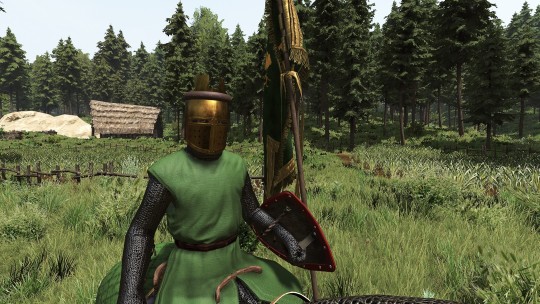
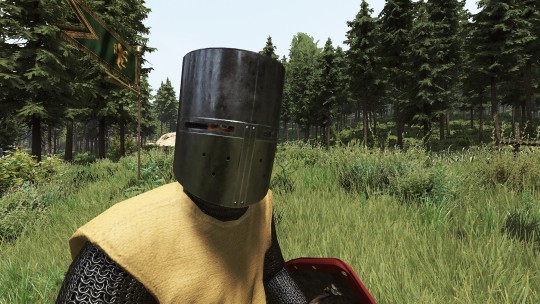

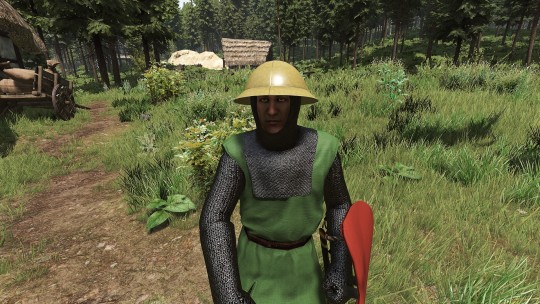

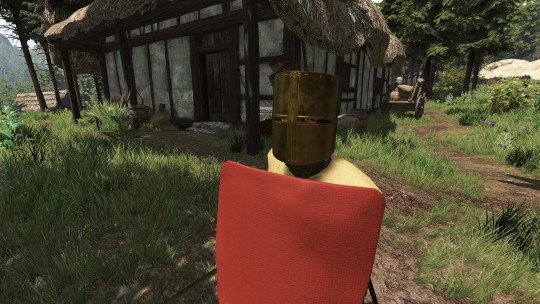
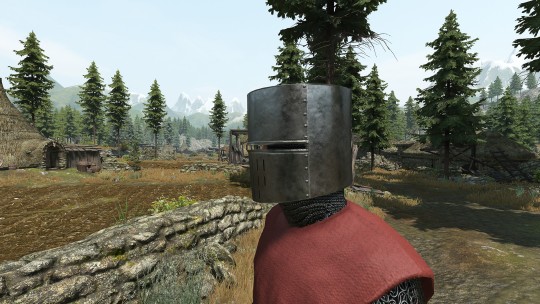



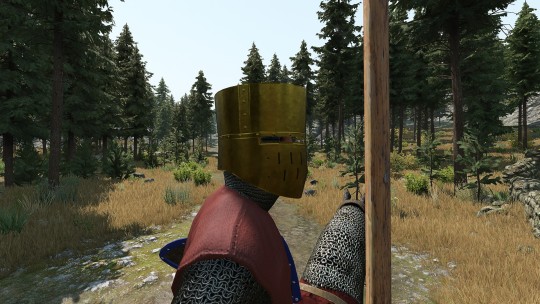
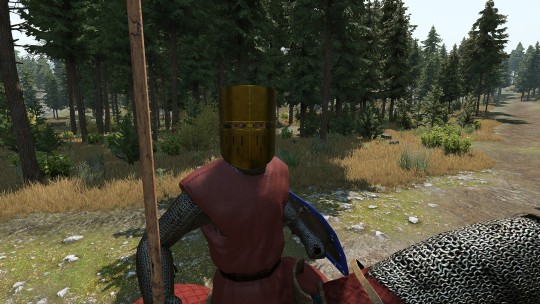

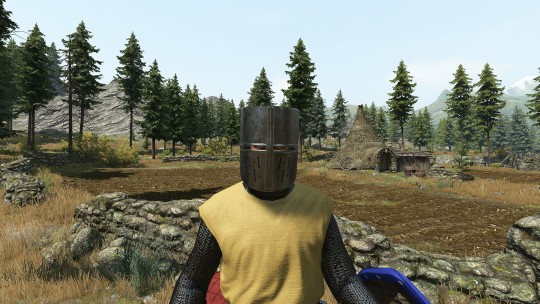
Been a while, but I got some new stuff to showcase. From top to bottom, left to right, here are the helmets and their sources: 1. A greathelm based of a German aquamanilia from lower saxony 2. A German greathelm from the german manuscript "Tristan and Isolde" (This one might be remodeled, I missed a detail on the helmet) 3. A French greathelm from a stained glass window in a Cathedral in Chartres, France (This one might also be redone.) 4. A German painted kettle helmet under a square coif from the German manuscript "Mainz Gospels" 5. A golden English Greathelm from the English Manuscript "Trinity Apocalypse" 6. An English Greathelm based off the seal of Gilbert de Clare 9th Earl of Clare 7. A German Greathelm from a seal of Nicola V de Rumigny 8. A French golden Greathelm from the manuscript "History of Outremer" 9. Last but not least, a French Greathelm from the "Maciejowski Bible".
And that is it for now. I do want to point out too that I am making shields that come in many colors/patterns based off the shield I see in manuscripts. I figured out how to make custom shields and the xml code for them. I plan on adding a lot more greathelms and helmets for lower tier troops. I will make a separate post later highlighting this development. Of course not everything is final, I will improve assets if needed or to correct any mistakes in terms of accuracy.
Sources/Credits:
Dr. Pavel Alekseychik, Natural Resources Institute Finland aka Medieval Advisor (specifically for the seal of Gilbert de Clare 9th Earl of Clare)
Manuscript Miniatures: https://manuscriptminiatures.com/ (a lot of the manuscripts/aquamanilia I use as a reference are from this website)
"Arms and Armors of the Crusading Era 1050-1350: Western Europe and the Crusader States" by David Nicole (Sketches of the Seal of Nicola V de Rumigny and French Greathelm in the Cathedral in Chartres, France)
Taleworlds Entertainment (base game models for body armor and shields)
3 notes
·
View notes
Text
The 16 States of Germany: Exploring the Diversity and Unity
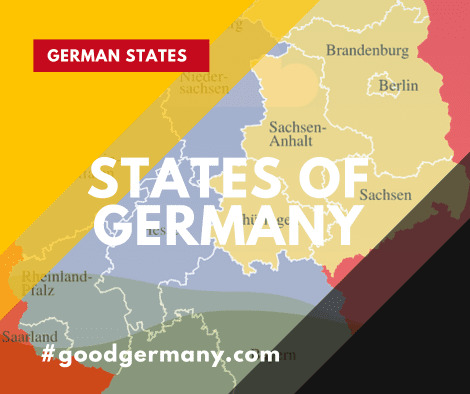
Germany, renowned for its rich history, cultural heritage, and economic prowess, is a country that consists of 16 distinct states, each with its own unique character and charm. From the bustling metropolitan areas to the serene countryside landscapes, Germany showcases a harmonious blend of modernity and tradition. Let's embark on a journey to discover the 16 states that contribute to the vibrant tapestry of this remarkable nation.
Table of Contents
- Introduction
- Schleswig-Holstein: Where Land Meets Sea
- Bavaria: A Tale of Traditions
- Berlin: The Heart of Modernity
- Baden-Württemberg: Innovation and Greenery
- Saxony: Where History and Culture Converge
- Hamburg: Gateway to the World
- North Rhine-Westphalia: Industrious and Dynamic
- Lower Saxony: Nature's Abode
- Hesse: Where Urbanity Meets Heritage
- Rhineland-Palatinate: Vineyards and Beyond
- Brandenburg: Castles and Lakes
- Thuringia: Enchanting Landscapes
- Mecklenburg-Vorpommern: Coastal Beauty
- Saxony-Anhalt: Of Art and Architecture
- Saarland: Small yet Significant
- Bremen: A Tale of Two Cities
- Conclusion
- FAQs
- What is the significance of Germany's division into states?
- Which state is known for its Oktoberfest celebrations?
- What makes Berlin a unique capital city?
- Which state is famous for its automotive industry?
- Are the states of Germany culturally diverse?
Introduction
Germany's federal structure comprises 16 states, often referred to as Bundesländer. This decentralized system empowers each state to have its own constitution, government, and educational policies while collaborating on national matters.
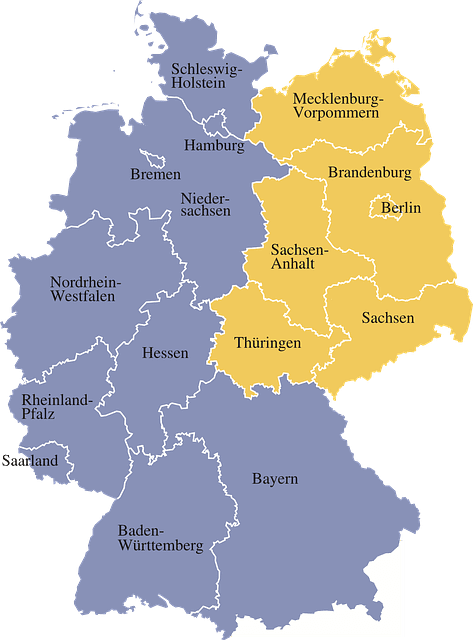
Schleswig-Holstein: Where Land Meets Sea
Nestled between the North Sea and the Baltic Sea, Schleswig-Holstein is renowned for its stunning coastline, charming villages, and maritime heritage. Visitors are drawn to its pristine beaches, and the iconic port city of Kiel hosts the renowned Kiel Week sailing event.
Bavaria: A Tale of Traditions
Bavaria, famous worldwide for its traditional culture, picturesque landscapes, and iconic Oktoberfest, embraces both its history and innovation. The state boasts fairytale castles like Neuschwanstein and a thriving technology sector.
Berlin: The Heart of Modernity
The capital city, Berlin, stands as a symbol of unity and progress. Rich in history, it houses iconic landmarks like the Brandenburg Gate, while also being a haven for artists, entrepreneurs, and diverse cultures.
Baden-Württemberg: Innovation and Greenery
Known for its high standard of living, Baden-Württemberg combines technological innovation with natural beauty. It's home to global automobile companies and the enchanting Black Forest region.
Saxony: Where History and Culture Converge
Saxony's historic cities like Dresden and Leipzig are cultural treasures. With a legacy of classical music, ornate architecture, and cutting-edge research, Saxony is a dynamic hub of art and innovation.
Hamburg: Gateway to the World
Hamburg, a bustling port city, has a maritime legacy that extends to its modernity. Its famous harbor, impressive architecture, and vibrant nightlife make it a global hub of trade and culture.
North Rhine-Westphalia: Industrious and Dynamic
This economic powerhouse, known as NRW, encompasses major cities like Cologne and Düsseldorf. With a rich industrial history, it's a melting pot of creativity, business, and diverse communities.
Lower Saxony: Nature's Abode
Lower Saxony is blessed with natural beauty, boasting the Wadden Sea National Park and serene landscapes. Hannover, its capital, seamlessly blends urban amenities with a tranquil environment.
Hesse: Where Urbanity Meets Heritage
In Hesse, the metropolis of Frankfurt contrasts with charming historic towns like Heidelberg. It's a financial center with a touch of tradition, offering a balanced urban and rural experience.
Rhineland-Palatinate: Vineyards and Beyond
This wine-producing region showcases medieval architecture, particularly in its capital, Mainz. Rhineland-Palatinate's rolling vineyards, combined with cultural heritage, make it a visual and culinary delight.
Brandenburg: Castles and Lakes
Surrounding Berlin, Brandenburg is a nature lover's paradise. Its serene lakes, picturesque countryside, and a plethora of castles create an idyllic escape from the urban bustle.
Thuringia: Enchanting Landscapes
Thuringia's dense forests and charming towns inspired poets like Goethe and Schiller. Erfurt and Weimar are cultural hotspots, offering insights into Germany's intellectual history.
Mecklenburg-Vorpommern: Coastal Beauty
The Baltic Sea coastline defines this state, where seaside resorts and historic towns abound. Mecklenburg-Vorpommern is a haven for water sports enthusiasts and those seeking tranquility.
Saxony-Anhalt: Of Art and Architecture
Home to the Bauhaus movement, this state celebrates modern art and design. Saxony-Anhalt's cultural offerings extend to historic Magdeburg and the scenic Harz mountains.
Saarland: Small yet Significant
Saarland's picturesque landscapes and unique blend of French and German influences make it an intriguing destination. Its industrial heritage and natural beauty create a distinctive identity.
Bremen: A Tale of Two Cities
Bremen and Bremerhaven, two cities within this smallest state, offer maritime history and modern innovation. Bremen's UNESCO-listed market square and the German Emigration Center in Bremerhaven provide diverse experiences.
Conclusion
Germany's 16 states showcase a harmonious blend of traditions, innovation, nature, and culture. Each state contributes to the nation's identity, reminding us of the diversity that unites this remarkable country.
FAQs
- What is the significance of Germany's division into states? Germany's federal structure empowers states with autonomy while fostering unity on a national level.
- Which state is known for its Oktoberfest celebrations? Bavaria is renowned for hosting the world-famous Oktoberfest, a celebration of Bavarian culture.
- What makes Berlin a unique capital city? Berlin is a melting pot of art, history, and modernity, reflecting Germany's complex history and contemporary vitality.
- Which state is famous for its automotive industry? Baden-Württemberg, with cities like Stuttgart, is a hub of automobile manufacturing and technological innovation.
- Are the states of Germany culturally diverse? Yes, each state has its own distinct culture, traditions, and characteristics, contributing to Germany's rich diversity.
Read the full article
3 notes
·
View notes
Text
Dolly goals 2023
1. Downsize my collection. I have too many, even though it hurts to let any of them go. I may post some for sale here in the next month.
Lately I’ve been tempted to get TM80 and make her into Kavi’s friend Pari. Kavi is darling, but I really wish she had a darker skin tone. I also want the new WW Kendall. And I realize these wants run contrary to the first sentence I wrote.
2. Create some traditional outfits for some of my dolls. One long, very slow project I’m working on is a Bronze Age Irish costume. I’m also considering making a medieval one and/or Iron Age one. The history is fascinating, as are the clothes, which are very different from what I’m used to working on.
1. Hanbok for Paul
2. Hanbok for Emmie
3. Rubakha and maybe sarafan for Ana and/or Annika
4. Dirndl-type outfit for Kirsten
5. Traditional German outfit, possibly from Lower Saxony
6. Replica of Kathleen’s outfit from the Girls of Many Lands line
7. Headscarf for Safira for Eid. She can wear Kavi’s salwar kameez with it.
3. Create a collection for Ana Rubin, starting with her traditional “greenhorn” clothes and progressing through her move to Brooklyn and life there.
7 notes
·
View notes
Photo

My home state Lower Saxony mourns the passing away of Sally Perel, born in the little town of Peine. Sally (Salomon) Perel became famous for his life story, which was told in 1990 in the film "Europa, Europa" (loosely based on his autobiography 'Ich war Hitlerjunge Salomon' - 'I Was Hitler Youth Salomon'.
Born a Jew to a shoemaker in Peine, he survived Nazi Germany by first fleeing to Poland (Loz) and then to the Soviet Union, while his brother fled to Lithuania (Vilnius). When the Nazis occupied parts of the Soviet Union, he was able to convince them that he was an ethnic German. Later he was sent back to Braunschweig/Germany, where he had to become a member of the Hitler Youth.
After the war, Perel was reunited with his brothers, who survived also, but learned that his parents and his sister had been murdered by the Nazis.
Until his old age, Perel, who loived in Israel, visited schools and universities around two times a year, to educate young people about the darkest era of German history. Today several schools bear his name.
His impressive personality and his call to be watchful against every kind of atrocity will be missed, not only in Germany. Sally Perell passed away on February 2nd, 2023 in Jerusalem.
Picture by Michael Kramer - Eigenes Werk, CC BY-SA 3.0, https://commons.wikimedia.org/w/index.php?curid=37941004
#Sally Perel#Hitlerjunge Salomon#Salomon Perel#Peine#Niedersachsen#Lower Saxony#Holocaust#Third reich
3 notes
·
View notes
Text
i was tagged by @herefortears for the 15 questions thing 😊 yes i recognize you!! thank you 💖 i think everyone has already done it, so i’ll just answer the questions!!
1. Are you named after anyone?
my middle name is my grandmother’s name, so kind of! :) my first name is original though.
2. When was the last time you cried?
last week, and also today.
3. Do you have kids?
no and i will never! ✂️
4. Do you use sarcasm a lot?
yes, and sometimes i use it wrong lol. apparently. unfortunately.
5. What’s the first thing you notice about people?
their hair i think? not really in a judging way, but that’s kind of just where my eyes fall first. the face can be too much to take in at first.
6. What’s your eye color?
green! 💚
7. Scary movies or happy endings?
i tolerate scary movies but always prefer happy endings.
8. Any special talents?
i’m trying to think of something that’s not a skill or something i specifically practiced to get good at? maybe my sense of direction? i never get lost and can learn maps and routes easily.
9. Where were you born?
lower saxony in germany haha
10. What are your hobbies?
reading, sewing and needlework in general, cooking, writing, and playing geoguessr
11. Have you any pets?
my family cat passed away about a year ago, but no new pets.
12. What sports do you play/have played?
i am unfortunately not sporty at all but i used to dance for a bit in my teens. i really want to get into archery.
13. How tall are you?
169cm
14. Favorite subject in school?
english and history!
15. Dream job?
librarian, although i’m happy being an editor. but in a fantasy world i would own a café/bakery that’s also a book shop, obviously.
3 notes
·
View notes
Text
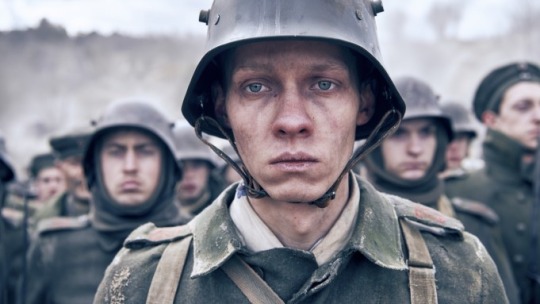
“All Quiet on the Western Front”
Bafta Best Film and Best Director.
The German language anti-war epic, directed by German filmmaker Edward Berger and based on the 1929 novel of the same name by Erich Maria Remarque, triumphed last Sunday scooping seven prizes. The film had 14 nominations on the Bafta longlist – the largest number for any film.
The film, which took home the Bafta for best film and best director, broke Italian coming-of-age drama Cinema Paradiso’s record of five for the highest number of Baftas for a foreign language film in 1988.
“All Quiet on the Western Front” The film follows Paul Bäumer (Felix Kammerer), a young German soldier who experiences the horrific reality of serving on the front line.
Remarque (born Erich Paul Remark) was born in 1898 in lower Saxony to a family of French ancestry; he enlisted in the German army at the age of 18 and headed to fight on the Western Front, where he was wounded five times, the last time seriously. Returning to Germany after the war, he changed his name back to the French spelling.
On November 10, 1928, the first instalment of All Quiet on the Western Front, Erich Maria Remarque’s acclaimed novel of World War I, appears in the German magazine Vossische Zeitung. Edward Berger’s German-language adaptation of Erich Maria Remarque’s All Quiet on the Western Front, itself a remake of the 1930 ‘Best Picture’ winner of the same name, but different from Hollywood war flicks, possesses a tone devoid of cinematic pomposity. This film gives a taste of war that lingers with nightmarish authenticity.
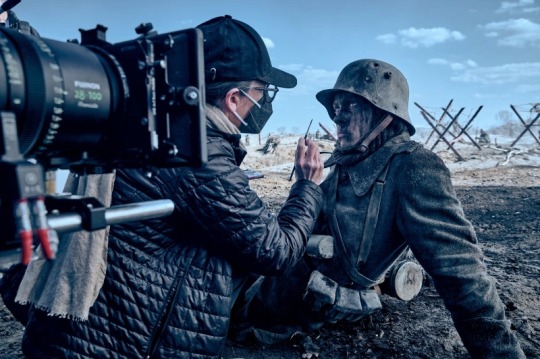
Heike Merker with Felix Kammerer as Paul Bäumer on the set of All Quiet on the Western Front, Courtesy of Netflix © 2023
Director Edward Berger's reexamination of Erich Maria Remarque's story about German conscripts hurled into the hell of bloody warfare in WWI.
The protagonist of that novel, All Quiet on the Western Front–its German title, Im Westen nichts Neues literally translates as In the West Nothing New–is Paul Bäumer, a young German soldier fighting in the trenches of World War I. The story opens in 1917 when half of Baumer’s company—many of them schoolmates from back in Germany—has been killed in battle.

Loyal to the novel, Berger’s film tells the story of a teenage boy who enlists in the Imperial German Army alongside his school friends, buzzing with exuberance like the fresh-faced protagonists. Though, as the reality of war sets in and the constructed fantasy quickly dissipates, the friends find themselves stuck in the brutality of one of history’s most violent conflicts.
Bafta: Best original score and sound
youtube
The director Edward Berger wanted the film to be created from a German perspective. He tasked composer Volker Bertelmann with the job of creating a score he’s never done before, giving him a few insights into what he wanted for the final cut.
Bertelmann, the composer wanted to use instruments connected to that time period, so he used a refurbished harmonium passed down from his grandmother to create “Destructive” sounds for a unique score.
It's interesting to see in this interview the sequence of scenes connected either by the music.
Volker Bertelmann, is a German pianist and composer, an Academy Award-nominated in recognition of his music for “All Quiet on the Western Front”. Like the British Academy Film Awards (BAFTA), and the music line-up award.
Bafta: Best adapted screenplay
The screenwriters behind All Quiet on the Western Front are Edward Berge, Scottish Triathlete Lesley Paterson, and Ian Stokell Netflix-produced war drama was the greatest success story of this year’s awards, winning Best Film.
The Scottish athlete-turned-writer won a triathlon with a broken shoulder to afford the rights to remake All Quiet on the Western Front - as her dream film won Baftas glory. A five-time world champion triathlete – who used her prize money from the sport to help fund of Bafta film winner and Oscar candidate.

Scottish 🏴 triathlete Lesley Paterson spent 16 years working on a screen adaptation of the anti-war novel All Quiet on the Western Front
So after meeting director Edward Berger, they pitched the film in Berlin in 2020 as a German language project when Netflix commissioned it. The film’s success is “unbelievable” for a foreign-speaking film: the people are craving “Things that matter.”
Bafta: Best cinematography

From left, Moritz Klaus, Aaron Hilmer, Adrian Grünewald and Felix Kammerer in “All Quiet on the Western Front.”Credit...ReinerBajo/Netflix
The drama balances the violent tragedy of war with stunning cinematography, shot by James Friend. Filmed in the Czech Republic, Friend uses mostly large-format cameras, taking the viewer through the muddy trenches of war and intense, heart-racing battle scenes.
They filmed the scenes at the Western Front trenches at an abandoned ex-Soviet air base in the Czech Republic town of Milovice. The location was a real gem to embark on pictures, as you see in the film.

Edward Berger poses with the award for the film, not in the English language for All Quiet On The Western Front (Ian West/PA)
youtube
The next step will be revealed when the 95th Academy Awards take place in Los Angeles on Sunday 12 March.
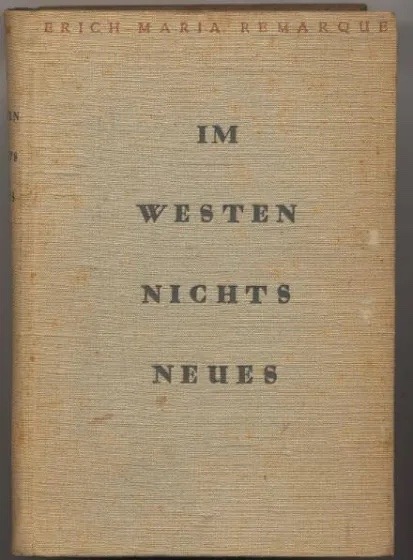
A first edition of German novelist Erich Maria Remarque's 'Im Westen Nichts Neues',published in Berlin in 1929 in the German. Considered by many the greatest war novel of all time.
#Bafta #AllQuietOnTheWesternFront #ErichMariaRemarque #EdwardBerger #LesleyPaterson #Ian Stokell #JamesFriend #VolkerBertelmann #WWI #PaulBäumer #FelixKammerer #ImWestennichtsNeues #novel #BestFilm #BestDirector #Bestoriginal scoreandsound #Bestadaptedscreenplay #Bestcinematography #Netflix
3 notes
·
View notes
Text
Feuerwehr Salzgitter: Protecting and Serving the Community

Salzgitter, a dynamic city in Lower Saxony, Germany, is well-known for its industrial prowess and scenic landscapes. Central to the safety and well-being of this vibrant community is the Feuerwehr http://feuerwehr-salzgitter.info/, the local fire department, which plays a critical role in emergency response and public safety. This article explores the vital functions, history, and community engagement of Feuerwehr Salzgitter.
A Brief History of Feuerwehr Salzgitter
The origins of Feuerwehr Salzgitter date back to the early 20th century, coinciding with the city's development as an industrial hub. Initially formed to protect the burgeoning industries and residential areas from fire hazards, the department has since evolved into a comprehensive emergency service provider. Over the decades, it has expanded its capabilities and embraced modern technologies to meet the growing needs of the community.
Key Functions and Services
Feuerwehr Salzgitter is responsible for a wide range of services that extend far beyond fire fighting. These include:
Fire Suppression and Prevention: At the core of their duties, firefighters respond to fire emergencies, using advanced equipment and techniques to extinguish fires and prevent them from spreading. The department also conducts fire safety inspections and public education programs to reduce the risk of fire hazards.
Emergency Medical Services (EMS): Feuerwehr Salzgitter provides essential medical assistance during emergencies. Their trained paramedics and emergency medical technicians are often the first responders to accidents, medical emergencies, and disasters, delivering critical care before patients reach hospitals.
Technical Rescue Operations: The department is equipped to handle various rescue scenarios, including vehicle extrications, water rescues, and incidents involving hazardous materials. Specialized training ensures that firefighters can safely and effectively manage complex emergencies.
Disaster Response and Management: In the event of natural disasters or large-scale emergencies, Feuerwehr Salzgitter plays a crucial role in coordination and response efforts, working alongside other emergency services to protect lives and property.
Community Engagement and Education: Recognizing the importance of public awareness, the department actively engages with the community through educational programs, fire drills, and safety workshops. These initiatives aim to inform residents about fire safety practices and emergency preparedness.
Community and Volunteer Involvement
Feuerwehr Salzgitter's success is deeply rooted in community involvement and the dedication of its volunteers. The department relies on a robust network of volunteer firefighters who support their full-time counterparts. These volunteers undergo rigorous training to ensure they are prepared for the demands of emergency response.
Community engagement is further strengthened through various outreach activities, such as open houses, school visits, and public demonstrations. These events not only educate the public but also foster a strong bond between the firefighters and the residents they serve.
Technological Advancements and Training
To keep pace with modern challenges, Feuerwehr Salzgitter continuously invests in advanced equipment and training programs. Recent technological upgrades include the acquisition of state-of-the-art fire engines, rescue tools, and communication systems. Training programs cover a broad spectrum of skills, from basic fire fighting techniques to specialized rescue operations.
The department also participates in joint exercises with neighboring fire departments and emergency services, ensuring seamless collaboration during large-scale incidents. Continuous training and knowledge exchange are pivotal in maintaining a high standard of service.
Future Outlook
As Salzgitter continues to grow and evolve, Feuerwehr Salzgitter remains committed to enhancing its capabilities and services. Future plans include expanding their fleet, incorporating more sustainable practices, and leveraging cutting-edge technologies such as drones for aerial surveillance during emergencies.
The department's focus on innovation, combined with its unwavering dedication to the community, positions Feuerwehr Salzgitter as a cornerstone of public safety in the region. By embracing new challenges and opportunities, they ensure that Salzgitter remains a safe and resilient city for its residents.
Conclusion
Feuerwehr Salzgitter embodies the spirit of dedication, courage, and community service. Through their comprehensive range of services, commitment to public safety, and ongoing community engagement, they play an indispensable role in the well-being of Salzgitter. As they continue to adapt and grow, the fire department's contributions will undoubtedly remain integral to the city's future.
0 notes
Text
Germany‘s ancient history in short and the development of „language“ in Central Europe
“Germans” (or „Deutsche“ - that is how we call us) are descendants of “Germanic peoples” - that is why the British call our country “Germany”. Originally, we owe the term “Germanic peoples” to the ancient Greeks - which was later adopted by the Romans (more precisely Julius Caesar). Julius Caesar distinguished between the „Celtic peoples“ who settled on the left side of the Rhine river, and the „Germanic peoples“ who settled on the right side. The term „Germanic peoples“ in this context referred to all different tribes who settled there at that time. After the fall of the Roman Empire (the Germanic „Odoacer“, or „Odoaker“ overthrew the last Western Roman Emperor), Europe looked like this in the late 5th century:

Source: „XPosition“ (2013), Central Europe at the end of the 5th century, Wikipedia, CC License
A large and important „Germanic tribe“ were the Franks („Franken“ - where „Frankreich“ is derived from and how Germans call „France“). They spoke their own language until the 8th century and called it “Frengisk” („Frankish“) or in Latin „Franconian“. Other large Germanic tribes were the Alemannians („Alamannen“ - where “Alemagne” is derived from and how the French call „Germany“), Burgundians („Burgunder“), Thuringians („Thüringer“), Saxons („Sachsen“), Angles („Angeln“ - where „Anglais“ or „English“ is derived from), Frisians („Friesen“) - but also Goths („Gothen“ - West and East Goths) were Germanic tribes.
Most Germans speak a quite good „High German“ today - but based on the used dialect or the timbre of the language, Germans can often recognize which region of Germany their compatriot comes from. This corresponds more or less to the former settlement areas of these Germanic tribes - although other local dialects have also developed over time. For example, I can tell from the „Saxon dialect” that someone comes from the „Saxon area“ of Germany. Whereas the part of Germany depicted above in the map as „Saxony“ („Sachsen“) corresponds more to today‘s „Lower Saxony“ („Niedersachsen“) where Germans speak „High German“ without dialect - so it seems that there is the origin of the German language used today. If some Germans speak pure dialect, it can be that they even cannot be understood by their compatriots.
Germanic tribes spread mainly in Central Europe and southern Scandinavia - as well as in England, on the Iberian peninsula and some eastern Europe parts. Therefore, Germanic tribes had a great influence in Europe - at least in Central Europe. And Central Europeans are more or less related to each other. One common basis of those Germanic tribes was their similar use of language. I recognized years ago that the Norwegian language must be related to the German language, since I could understand all written words of an Norwegian brochure. Generally, Scandinavians can understand each other quite well as long as they use the „written language“. Along with German, English is the most spoken Germanic-based language.
Back to the Franks. Since the fall of the Roman Empire, the Franks have been very busy for 300 years to conquer all of Germany and France. The map below (green parts) shows the Franconian territory around 800 at the time of „Charlemagne“ („Karl der Grosse“ or „Charles the Great“ or „Charles le Magne“) - who was ultimately crowned Roman Emperor and was therefore considered the successor to Western Roman Emperors. The French and Germans claim Charlemagne as the founder of their nations.

Source: „Semhur“ (2008), Map of the rise of Frankish Empire, from 481 to 814, Wikipedia, CC Licence
The Franks spoke in the today’s French part of their territory the so-called peasant Latin "rusticam romanam" - from which the French language later developed (French as well as Spanish, Portuguese and of course Italian are Latin-based languages). But some Franks also spoke pure Latin, while others continued to speak the Germanic-based language (especially in the today’s German parts of the territory).
The term “Frengisk” („Frankish“ or „Franconian“) was no longer clear and existed no longer as a language. For those who still spoke the Germanic-based language, a new term had to be found that clearly demarcated the language. This term was created from the Germanic word “theoda”, meaning “people”, and given the Latin ending “-iscus”. “Theodiscus” were the Franks who spoke the Germanic-based language, in contrast to the Franks who had adopted peasant Latin as their language. “Theodiscus” later became “diutsch” in Old High German, “düdesch” in Low German and “teutsch” in High German.
In 843, the Treaty of Verdun divided the Frankish Empire into West (grey), Central (orange) and East (blue) Frankish parts. The division reflected an adherence to the old Frankish custom of partible or divisible inheritance amongst a ruler's sons, rather than primogeniture (inheritance by the eldest son) - therefore the division was nothing more than a dispute over inheritance, as occurs in the best families today.

Source: „Furfur“ (2019), Partition of Francia after the Treaty of Verdun 843, Wikipedia, CC License
The last revision of the division of the Frankish Empire took place in the Treaty of Ribemont in 880. The north of the central part was added to the eastern Frankish part. The rest of the central part was divided into the Kingdom of Burgundy and the later Kingdom of Italy. France later emerged from the Western Frankish Empire (and the Kingdom of Burgundy) and the „Holy Roman Empire of the German Nation“ from the Eastern Frankish Empire (and the Kingdom of Italy). The language border was mainly used as a reference point for the division. The following map shows the Kingdom of France (olive green), Kingdom of Burgundy (orange area on the left) and the „Holy Roman Empire of German Nation“ (red demarcation lines) in the 10th century.

Source: „Captain Blood“ (2005), The German and Italian Reigns of Ottonian and Salic Emperors (and Neighboring Kingdoms), Wikipedia, CC License
The „Holy Roman Empire of German Nation“ existed more or less in the borders shown in the drawing above until the Napoleonic era. Napoleon restructured Germany quite a bit and wanted to establish a new "Roman Empire" in Europe - there was a reason why he had himself crowned „Emperor of France“. And why not - because both the French and the Germans could claim to be the heirs of "Charlemagne"?
Ironically, the fall of Napoleon led to a further division of the „German Empire“ and the emergence of Prussia as the dominant power in Germany - ultimately leading to the Prussian king being proclaimed "German Emperor". The title „emperor“ seemed to be important to show the legitimacy of this dominance. The rest of the history is quite known.
This brief outline of history shows how closely related Europeans (especially central Europeans) actually are. Our understanding of the state, law, religion and general coexistence has its roots in Greco-Roman antiquity, whose ideas and values shaped this continent. Its heirs have tried to preserve and continue this legacy - sometimes better, unfortunately often worse.
„The more I've traveled, the more I've actually become aware of my own identity - also as German and European.“
-Simplicius Simplicissimus
#traveling#reisen#germany#german history#deutschland#deutsche geschichte#quotes#zitate#simplicius simplicissimus#europe#europa#napoleonic wars#napoleonische kriege#napoleon#franks#franken#charleslemagne#karl der grosse#charles le magne#home#identity#zuhause#identität
1 note
·
View note
Text
Warpe: An Oasis of History and Tranquility Away from the Bustle
Marcus hadn't experienced such a delightful vacation in a long time as he did in Warpe. The small municipality, nestled in the gentle hills and valleys of the Samtgemeinde Grafschaft Hoya in the district of Nienburg/Weser, Lower Saxony, was idyllic in every sense. Watercourses flowed throughout the area, including the picturesque Bückener Mühlenbach, which meandered through the village, passing its abandoned, decaying, and restored watermills.
Despite being off the beaten tourist path, Warpe occasionally witnessed exciting events that quickly became known throughout the village. Marcus had the fortune of meeting Horst, a former village schoolteacher who had discovered his passion for music. Horst provided Marcus with numerous recommendations for meeting people in Warpe and exploring its attractions.
Warpe's history extended far back in time. From 1259 to 1555, the von Warpe noble family had their ancestral seat here. Even the Counts of Hoya owned estates in this small village. The rich history was reflected in the local buildings. A school had operated in Warpe until 1963, nurturing generations of children.
The entire village could be traversed by bicycle in just about 15 minutes. The proud emblem of Warpe showcased a silver watermill wheel on a blue background, surrounded by golden ears of wheat and crossed gable boards ending in outward-facing horse heads.
During his stay in Warpe, Marcus discovered that the village was primarily shaped by agriculture, although tourism played a significant role as well. He fondly recalled the popular private Hoffestivals, attended by approximately 300 guests, which transformed rural life into a celebration of music and joy, with nearly half the village participating.
Marcus also explored the various local associations in Warpe, such as the Ernteclub Warpe, the voluntary fire brigade, the Nordholz-Helzendorf singing association, the TSV Nordholz sports club, the Nordholz-Helzendorf shooting club, the Warpe shooting club, the Windhorst shooting club, and the Wundertüte e.V. kindergarten, nurturing the creative potential of young residents.
Warpe was also home to several local businesses, including the Mittelweser Tiefbau GmbH & Co. KG and the Hofkäserei Derboven GmbH & Co. KG, which played a significant role in the local economy.
Despite being a predominantly rural community, Warpe boasted good connectivity. The Bundesstraße 6 was a mere 5 km away, and on school days, there was a bus connection via the local bus line 26 operated by the Verkehrsgesellschaft Landkreis Nienburg, serving Bücken and Hoya.
During his time in Warpe, Marcus also had the pleasure of meeting notable personalities, such as the painter and sculptor Pablo Hirndorf (*1963), who carried forward the village's creative heritage through his artistic works.
As Marcus reflected on his time in Warpe, he was captivated by the serenity and beauty of this community. The warm reception from the locals, the vibrant history, and the picturesque landscape made Warpe a special place that Marcus would undoubtedly cherish in his memories.
#Warpe#municipality#Grafschaft Hoya#Nienburg/Weser#Lower Saxony#vacation#idyllic#hills#valleys#watercourses#Bückener Mühlenbach#watermills#history#noble family#Counts of Hoya#buildings#school#bicycle#emblem#watermill wheel#wheat#gable boards#horse heads#agriculture#tourism#Hoffestivals#associations#Ernteclub Warpe#voluntary fire brigade#Nordholz-Helzendorf singing association
0 notes
Text
Week ending: 28 January 1954
Already nearing the end of January, and we are seeing two songs, one familiar, one fresh but... interesting, to say the least.
Oh! My Papa - Eddie Fisher (peaked at No. 9)
It's this song again! Truly an unlikely hit, but at least this time we have lyrics? It's a very sentimental treatment of the originally-German track, all about (what else) the singer's papa.
There is still some Eddie Calvert-style trumpeting, but it's restricted to these little flourishes inbetween verses and chorus, which is a bit sad, since they're some of the best bits of the track! Annoyingly, there's also an absolutely fantastic trumpet introduction that got me way too excited for what then turned out to be a fairly average track.
But yes, I can't say much good about the actual songwriting. It's pretty run-of-the-mill stuff, all about how Eddie's dad was great, and he misses him. It's eulogistic, but bland, and lacks the kind of specific detail that would actually make me feel emotional about it all.
The musical backing seems to know that it's propping up lacklustre material, because it also just plods along gamely, with a plucky bassline, some vague, frilly strings, and, later on, some unnecessary but thankfully unobtrusive backing singers.
It's so different to Eddie's version that I actually wondered halfway through the first time whether it was actually the same song, but I think that's more because of the extreme blandness of this version, and not because either version is actually particularly radical.
I wasn't a raving fan of Eddie's version, but this version makes me appreciate it a bit more, because the bits of this I liked - the trumpet and some moments where the tune really soars - are all things that both versions had in common.
The public clearly agreed, since this version only readed Number 9. I don't know if that's because it's worse, though, or just because it's American, and thus wouldn't have been as easy to get ahold of. It's certainly a bit glossier than Eddie's version, as many of these American versions seem to be, and its been made a lot more palatable (and in this case bland). This includes Anglicising the title from the rather German Oh Mein Papa, which... fair enough, I can get behind that, especially once there are non-German lyrics.
The Happy Wanderer - Obernkirchen Children's Choir (2)
And then, just as I think the charts might be getting boring: this. To which I can only say... heh?! How did this song happen? And more importantly, why did this song happen?
I'm genuinely baffled. It's a song with a long and improbable history, going back to a guy called Florenz Friedrich Sigismund in the 1840s, who was writing poetry right in the middle of a not-actually-very-unified vaguely-patriotic movement retroactively called the Reformbewegung, whcih included the Wandervögel, who were all about walking and enjoying nature and getting away from the cities.
These kind of interlocking subcultures are one of my favourite historical corners, because they have links to all sorts of later movements as diverse as the New Age movement, Scouting, ecological campaigners, Nazis, modern pagans, heritage preservation people and also, like, nudists. But that's another post for another blog.
Either way, the poem apparently became popular, but it's only 1949 that it got this tune - even though it seems like a super traditional walking song! A guy called Friedrich-Wilhelm Möller wrote the tune we hear here, and then it got super popular in 1954 when a choir of children (many of them war orphans) from Oberkirchen in Lower Saxony, northern Germany, came to Wales to sing at the Llangollen International Musical Eisteddfod, and apparently this was the song that captured the British public's attention?
It all just seems gloriously odd to me. Like, eisteddfods are such a niche British thing, and not even that well known beyond Wales, and it just seems weird that the British public would a) actually listen in and b) pick up on this song in particular. German sentimental ballads do, to be fair, seem to have had more cultural cachet (either on their own or in translation) than I expected when I started this project. But stil...
Part of what confuses me is that this, even if it wasn't German and old, is a very weird recording. It's got these children singing, but their voices are high and quavery, like Snow White from the Disney film had been recorded and had her voice put through some very strange post-production effect. I can still tell apart most of the lyrics, which is a win, but they're oddly echoey and shimmery-sounding, not at all what you'd expect.
The standout lyrics that you will certianly pick up are the repeated refrain of "Falderi-Faldera", which soar up to stratospheric heights. They're exuberant and nonsensical - think a German "Fa-la-la-la-la" - and they do give the whole thing a jolly sort of effect. Again, it makes me think of the Seven Dwarfs a bit, and the scene where they're all dancing around.
The rest of the lyrics are pretty standard, all about the joy of walking. The first verse explains that this runs in the singer's family: "My father was a wanderer / And it's also in my blood / So I'll merrily walk as long as I can / And wave to you my hat." (translation mine)
We then get a rundown of all of walking's good healthy effects - there's fresh air, it keeps your heart healthy, lets you breathe better, lets your mouth sing - and then all the ways that nature sings along, from the little birds to the little babbling brooks. It's very 1800s.
And then we slow down and get a bit more stately for the final verse, as the singer explains that "So I carry my knapsack and my stick / Out into the wide world / And until I lie in the cool, cool grave / A merry wanderer I shall be" (it scans in German, I just couldn't be bothered translating meter!) I like it, actually. Genuinely.
So, we get two German songs, and while one was a much safer option, I think in this case the British public and I are in accord. The Obernkirchen children's choir is just a more interesting prospect. There's also something kind of sweet about it all. I've listened to it while writing this post more times than is probably wise, and I've still not got sick of it. Plus, as a bonus, I really enjoyed diving in the weird, tangled history of the thing. True, I have a degree in this specific kind of stuff, so I may be biased. But I think it's genuinely quite cool? I don't know, don't sue me.
Favourite song of the bunch: The Happy Wanderer
0 notes